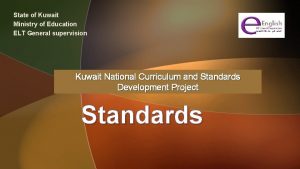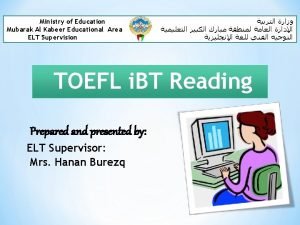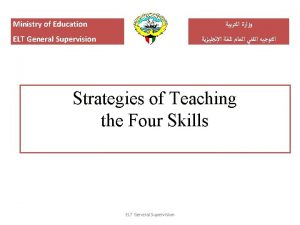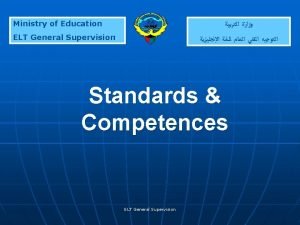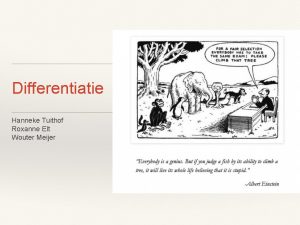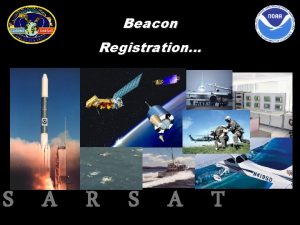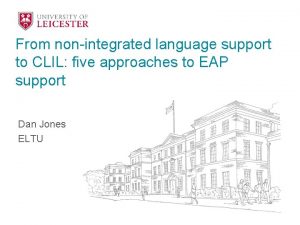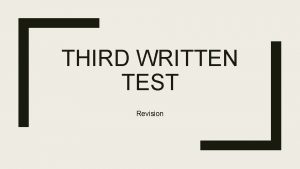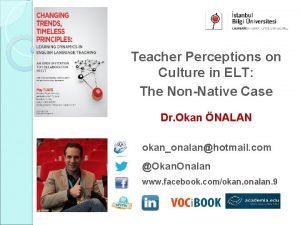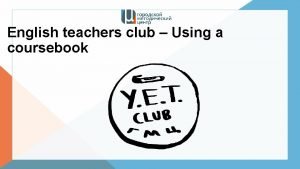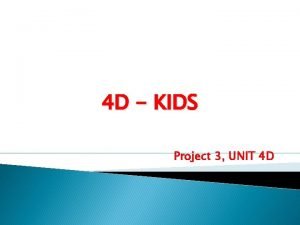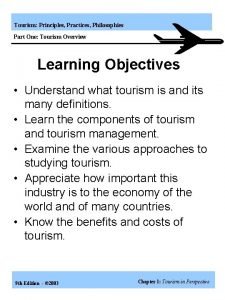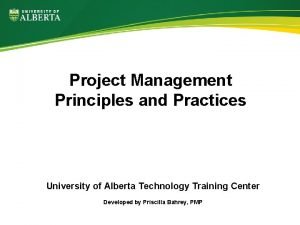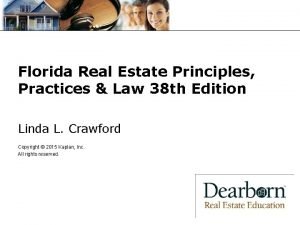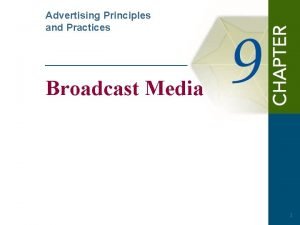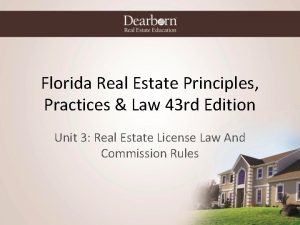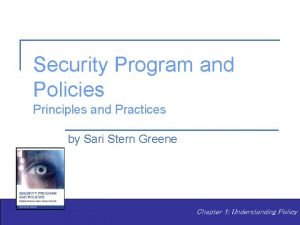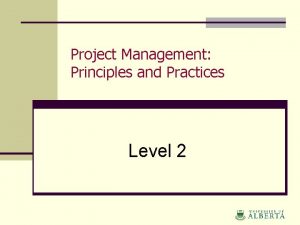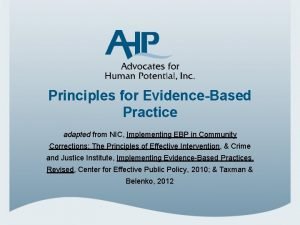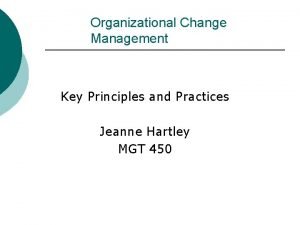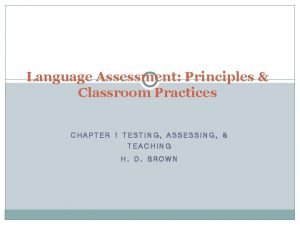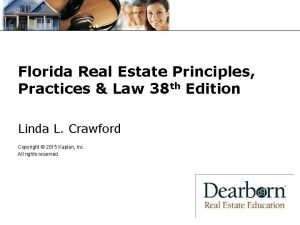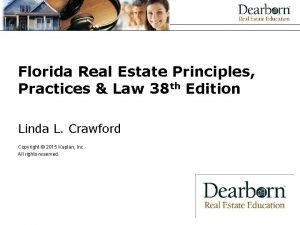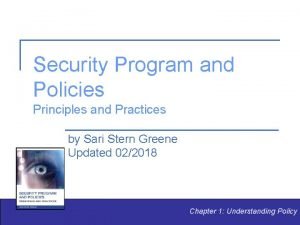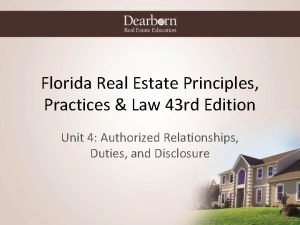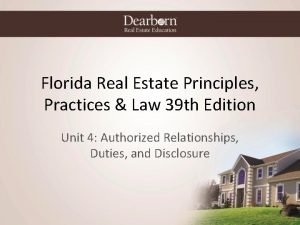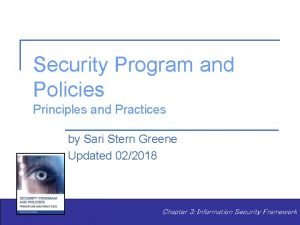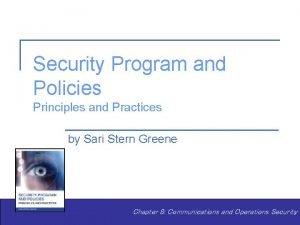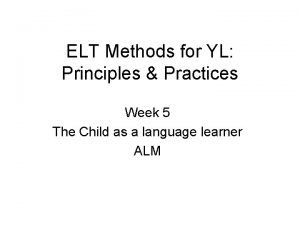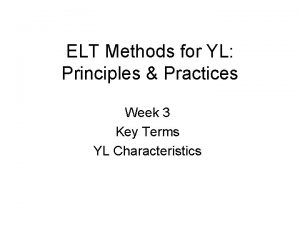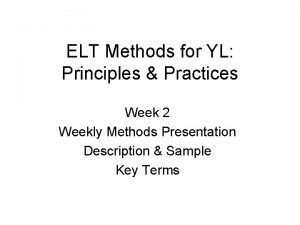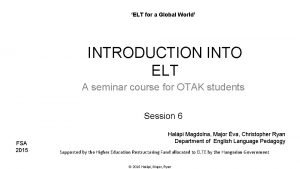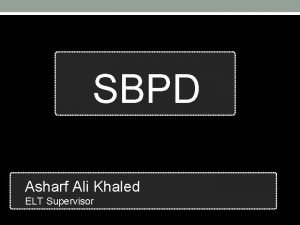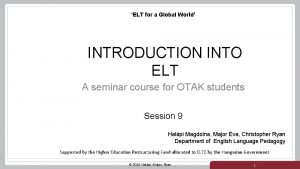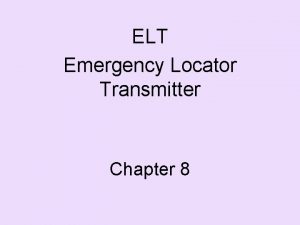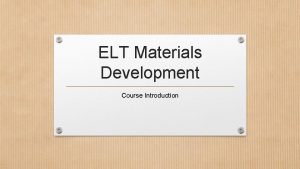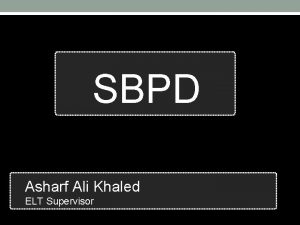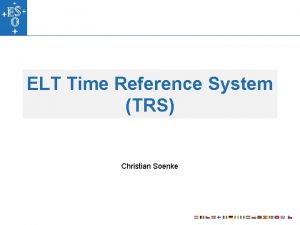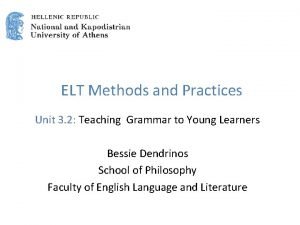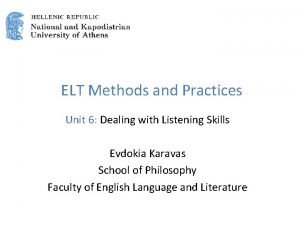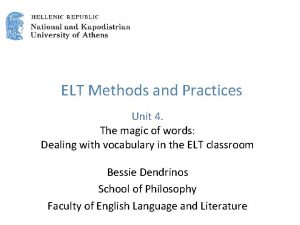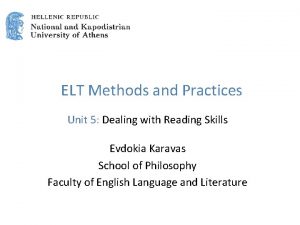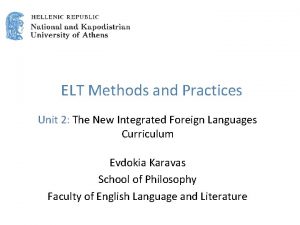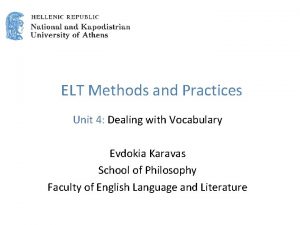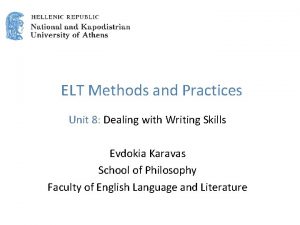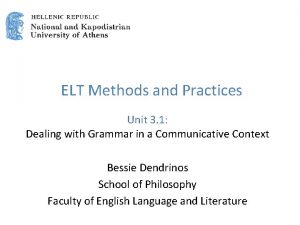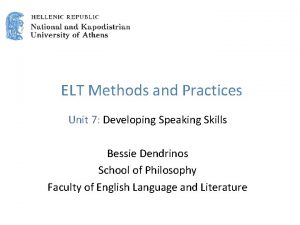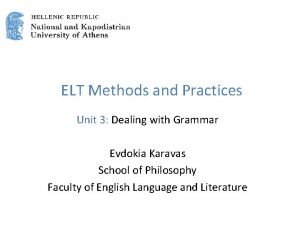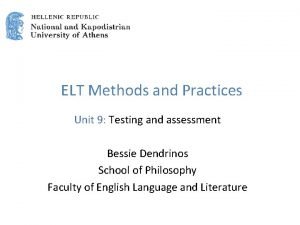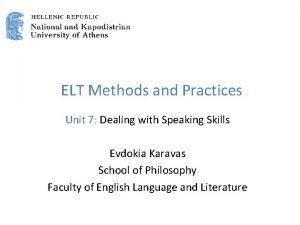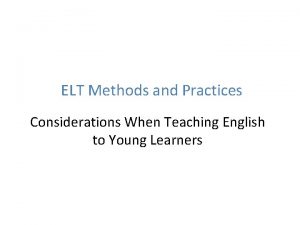ELT Methods for YL Principles Practices Week 4




































- Slides: 36

ELT Methods for YL: Principles & Practices Week 4 Finish YL Characteristics DM

Homework • Reading #2: “The Child as a language learner. ” Answer Qs on page 22. Do reading on pages 23 -42.

Methods Presentation Schedule 1) Direct Method (March 29) - James 2) The Audio-Lingual Method (April 5) - June 3) Storytelling & the Natural Approach (April 12) - Miso 4) TPR & TPRS (April 19) – Park Sojung & Son Jungwon 5) Storytelling and Dialogic Reading (April 25) Gahyun/Julia 6) Communicative Language Teaching (May 3) Taegu/Juyoung 7) CBI and Project based learning (May 10) Minji 8) CBI and Language Exp. Approach (LEA) (May 17) Hyohoon/Yerim 9) TBL and Project based learning (May 24) Daniel/Eunju 10) Post Method Principles Eclecticism (May 31) - Joyce

Warm-up Review: Criticism of Piaget • Tended to underestimate a child’s thinking ability • What does Donaldson say is needed maximize YL engagement? She says children need 3 things, what are they?

Review: Criticism of Piaget • Donaldson suggested that to maximize learner engagement and learning children need 3 things: – familiar tasks – familiar situations – comprehensible language

Vygotsky – Socio-Cultural Learning • Learning is social • Socio-Cultural context plays a role in the learning process • The main difference: – For Piaget it’s the child's mind in a physical environment – For Vygotsky it’s the child's mind in the social environment

Vygotsky – Zone or Proximal Development (ZPD)

Scaffolding • Both an instructional technique used spontaneously during instruction – T see learner having trouble – T asks Q or gives hint w/o taking over • And a key component of lesson planning – Activities should be sequence from easy to more difficult – Review old info before intro new info – Provide structured support that is gradually taken away

Additional Characteristics and Implications • Respond to meaning even if they don’t understand individual words, so gestures, intonation, facial expressions, and visual aids help to convey meaning in the TL • Learn more indirectly than directly. (Implicit) They learn from the environment not explanation • Understanding comes from what they see, hear, touch and interact with, not just from explanation – engage Ss in activities and limit TTT

Additional Characteristics • Generally display an enthusiasm for learning and are curious about the world around them. (Learn through discovery, so find out what they like and want to learn) • Have a need for individual attention and approval from the teacher. (Praise them, call on them by name, validate their participation) • Keen to talk about themselves and respond well to learning that uses their own lives as topics in the classroom (personalization). • Have limited attention span unless the activity is extremely engaging.

Adolescents • Is a time of rapid physical growth (puberty) – Puberty affects their energy levels, attention span, and cognitive development • Are emotional and moody, but also want to feel independent and mature • Are more aware of their relation to their peer group and so prefer not to need the teacher’s help or approval

Adolescents • Needs learning to be meaningful in terms of what they perceive or believe is cool and popular • Their ability to think abstractly increases, that is they move from an ego-centric learner to more mature and contemplative learner • Are more concerned with the here and now and less worried about the future, so motivational strategies must reflect this

Adults • Are more autonomous and self directed • Have a wide range of experiences and knowledge to draw on • Are goal and future oriented • Are slower to learn something, but learn it more deeply

In Conclusion • Learner difference are important when consider how and what to teach • Age for us as teachers of YL is perhaps the most important difference, but it isn’t the only one

Direct Method • Sample Presentation

In your presentation please discuss the following… • What are the main principles about language, teaching and learning that guides the techniques and strategies of the method you have selected? • What are some of the key techniques and strategies that the method uses to convey, practice, and assess language and language learning? • How might you use the method, its techniques and strategies in your own future teaching? (Describe an activity or specific learning sequence and explain how it uses the principles, techniques and strategies of the method)

A new perspective • In conjunction with the Paris World Fair • Major International Conference • Linguists, Cultural Anthropologist and members of the newly formed International Phonetics Association

DM: Some History • DM is a reaction to the GTM based on observation about how people learn their first language – Primacy of spoken language should be reflected in oral-based methodology – Learners should hear the language first, before seeing it in written form – Language should be presented in sentences in meaningful contexts, not as isolated, disconnected pieces

DM and the Berlitz School • Direct Method was very popular because it was adopted by a major European language school • Berlitz rules mirror DM almost exactly – – – Never translate: demonstrate Never explain: act Never make a speech: ask questions Never imitate mistakes: correct Never speak with single words: use full sentences

DM and the Berlitz School – Never speak too much: make Ss speak much – Never speak too slowly: speak normally – Never speak too quickly: speak naturally – Never speak too loudly: speak naturally

DM: Principles based on the rules • DM has one very basic rule: NO TRANSLATION ALLOWED • Meaning is to be conveyed directly in TL through use of demonstration & visual aids, without using L 1 at all

DM: Principles based on the rules • Classroom instruction conducted exclusively in TL • Only everyday vocabulary & sentences taught • Oral communication skills built up in carefully graded progression around T-S Q&A exchanges in small, intensive classes

DM: Principles based on the rules • New teaching points introduced orally – Listening before speaking – Meaning before form – Introduce new language and check that Ss understand that new language through the use of questions (these techniques are described below)

DM: Principles based on the rules • Grammar taught inductively – T guides Ss through the grammar typically by using Q&A routines – Here’s an example

I pass out this worksheet:

On the whiteboard

On the whiteboard + er

On the whiteboard + er - y + ier

On the whiteboard + er - y + ier more

On the whiteboard + er taller - y + ier more

On the whiteboard + er taller - y + ier happyer more

On the whiteboard + er taller - y + ier happier more

On the whiteboard + er taller - y + ier happier more intelligenter

DM: Principles based on the rules • Concrete vocabulary taught through demonstrations, objects, pictures • Abstract vocab: association of ideas

Question Techniques • Focusing Questions (to check Ss attn. ) – What do you at the bottom of page 86? – How many columns do you see? • Guiding Questions (to elicit information form Ss) – What do you see in this picture? – Do long words or short words take more? • CCQs (Comprehension/Concept Check Questions to check if Ss understand what has be said)

CCQs • There are three kinds of CCQs • Positive/Negative check questions: – Is this a cup? – Do doctors work in a police station? • Discrimination check questions: – Is a ghost alive or dead? – Are you working alone or with a partner? • Demonstration check questions: – What are you going to do? – Where does a doctor work?
 Week by week plans for documenting children's development
Week by week plans for documenting children's development Wax pattern in fpd
Wax pattern in fpd Elt general supervision
Elt general supervision Repak elt
Repak elt Mubarak al-kabeer educational zone
Mubarak al-kabeer educational zone Elt supervision
Elt supervision Elt general supervision kuwait
Elt general supervision kuwait Direct method of english
Direct method of english One size does not fit all in education
One size does not fit all in education Roxanne elt
Roxanne elt Noaa elt registration
Noaa elt registration Word coinage examples
Word coinage examples Elt general supervision
Elt general supervision Language
Language Will + infinitive
Will + infinitive Okan önalan
Okan önalan English teachers club
English teachers club Oxford project 3 unit 4 test
Oxford project 3 unit 4 test Tourism principles practices philosophies
Tourism principles practices philosophies Sdlc principles and practices
Sdlc principles and practices Project management practices and principles
Project management practices and principles Florida real estate principles practices and law download
Florida real estate principles practices and law download Broadcasting principles and practices
Broadcasting principles and practices Involuntary inactive real estate license florida
Involuntary inactive real estate license florida Security program and policies principles and practices
Security program and policies principles and practices Project management principles and practices
Project management principles and practices 8 principles of evidence based practices
8 principles of evidence based practices Change management principles and practices
Change management principles and practices Standard precautions cosmetology
Standard precautions cosmetology Current issues in classroom testing
Current issues in classroom testing Florida real estate principles practices
Florida real estate principles practices Ostensible partnership real estate
Ostensible partnership real estate Security program and policies principles and practices
Security program and policies principles and practices Florida real estate principles practices
Florida real estate principles practices Florida real estate principles practices
Florida real estate principles practices Security program and policies principles and practices
Security program and policies principles and practices Security program and policies principles and practices
Security program and policies principles and practices


